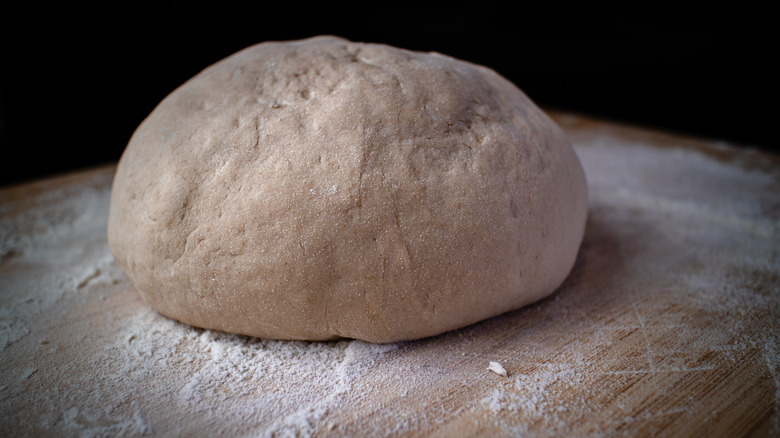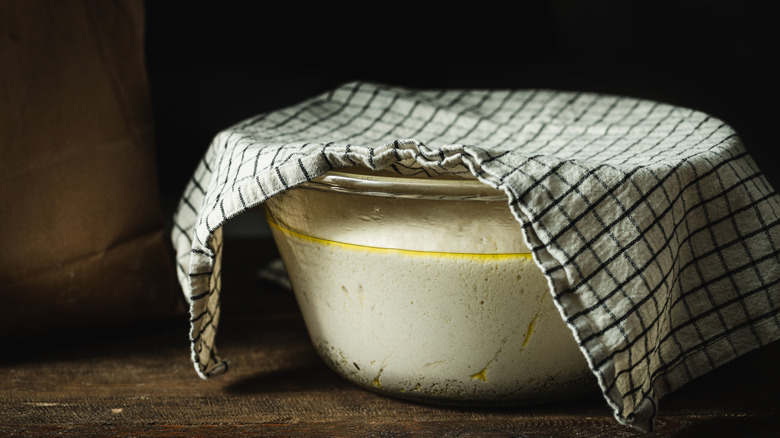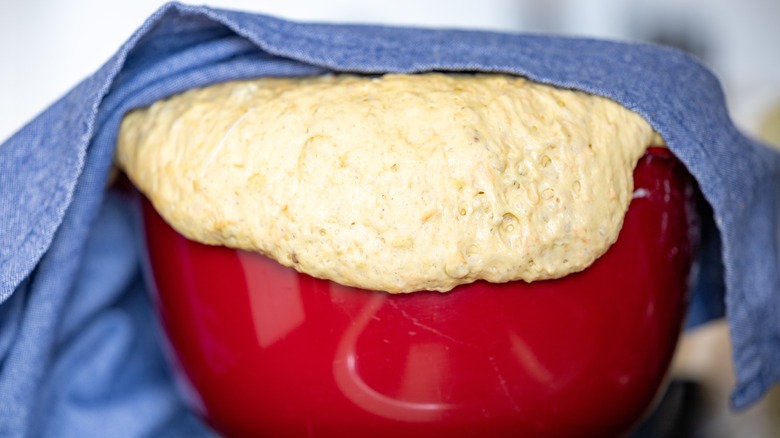What To Do If You Accidentally Overproof Your Bread
If you've left your bread to rise for too long, it can become overproofed — basically, this means it's risen too much. In short, this means there's too much gas in it, and the bread won't hold its shape properly and might end up deflated. You can test for overproofed bread by poking the dough: If you make a dent with your finger and the dough doesn't bounce back at all, sorry: You've got overproofed dough on your hands.
The good news is that it can be fixed — at least in certain situations. If you've overproofed the dough on its first proofing, when the loaf hasn't been shaped (for most bread recipes, you'll do two rounds of proofing), the fix is simple. You can simply punch the dough (or flatten it any way you like, with your hands or any robust kitchen utensil), so that excess air is squished out, and then you can continue with shaping the loaf and the second proofing. Depending on the type of bread, you can do this repeatedly, in the event you overproof the bread more than once — it's probably okay with brioche, rye, and pizza dough, to name a few.
Sourdough is more sensitive: You can maybe deflate it once, but if it happens on the second proof, you'll have to just take your chances baking it — although if you don't score the dough and use a hotter oven temperature, you might avoid the bread deflating as overproofed dough tends to do.
What causes overproofed bread?
If you're baking bread with yeast, you'll generally need to set aside time to let it proof — some use the terms "rise" or "ferment," but it's all the same thing. Of course, there are recipes for "quick breads" that don't require proofing — flatbreads are a common example (but you can use baking powder in such recipes to add some puff to the recipe).
During the proofing process, the yeast eats up carbohydrates and converts it into carbon dioxide, which results in the bubbles in your dough that allow it to rise so that you're not eating a dense rock-like hunk of bread. But there are limits to how much you can proof it, and proofing bread for a very long time doesn't mean it'll be magically airy and light. This is because if bread is proofed too long, all that carbon dioxide will basically burst the dough open, making it collapse or deflate. The end product will then be flat or dense, and not so appetizing. Unfortunately, there's no magic number for how long to proof bread: It depends on factors like the recipe and the environment you're proofing it in (for example, whether it's hot or cold), so it can be anywhere from a half hour to overnight.
How to avoid overproofing bread
While it's relatively easy to fix overproofed dough, ideally, you should avoid overproofing your dough in the first place, and there are a few strategies for doing this. Firstly, pay attention to your dough as it's rising: While this doesn't mean you need to have your eyes on it constantly, you can check when it's sufficiently proofed by poking it with your finger. When it's proofed perfectly, the dough will bounce back from your poke while still leaving a slight indentation.
If you're a forgetful baker, you can use a timer to remind yourself to check your dough after a certain time. Following the recipe is always wise, but be attentive to the environment — if it's proofing in a warm place, it'll rise faster, raising the chance of it overproofing — ideally, you don't want it in a space hotter than about 77 degrees Fahrenheit.
If you need to leave for a few hours and can't check on the dough, don't worry: You can always put it in the refrigerator. This will slow down the proofing process substantially — you may need to proof it overnight — but should eliminate the chance of it being over-proofed.


